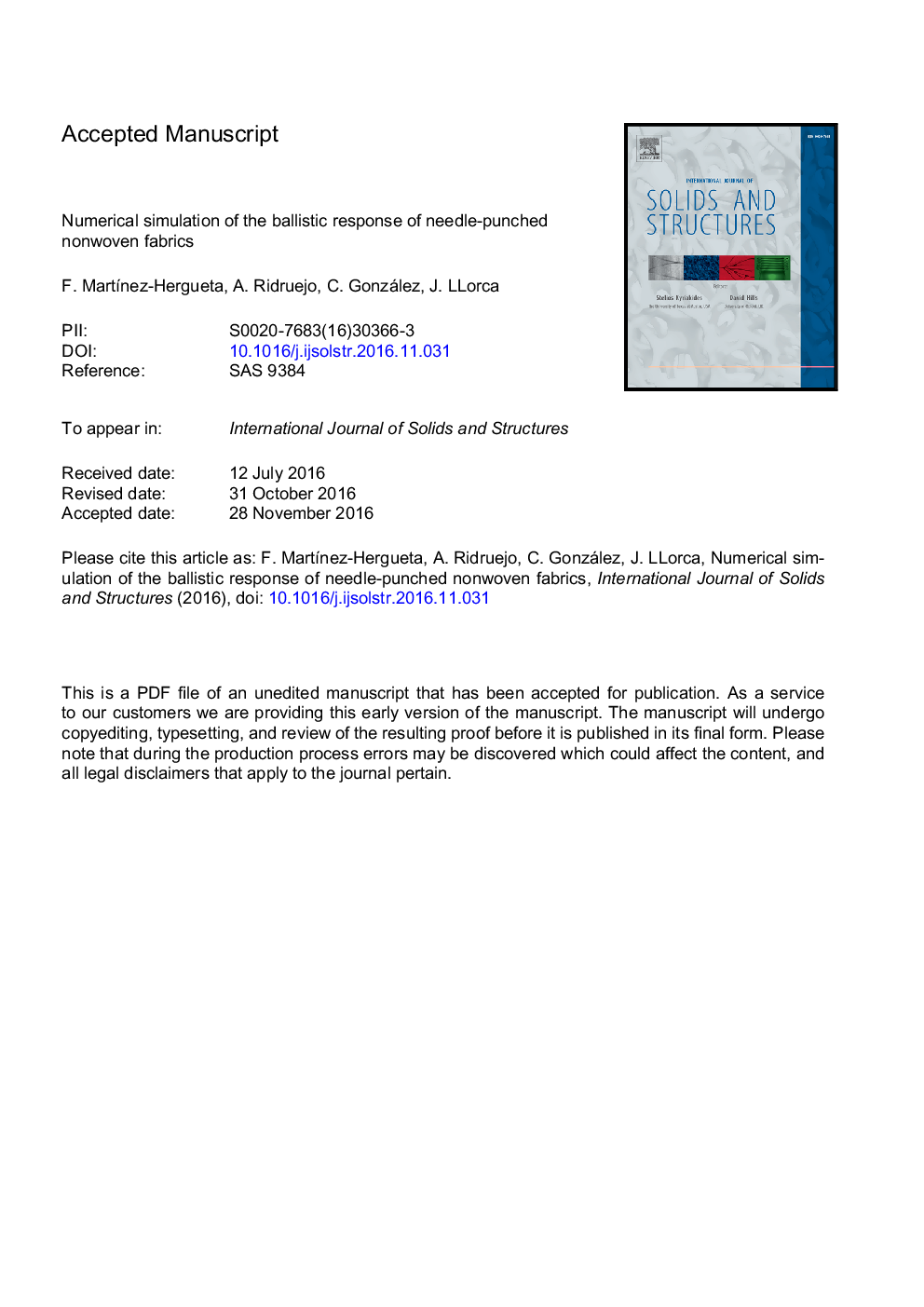| Article ID | Journal | Published Year | Pages | File Type |
|---|---|---|---|---|
| 4922625 | International Journal of Solids and Structures | 2017 | 31 Pages |
Abstract
The ballistic performance of a mechanically-entangled nonwoven fabric was studied by means of numerical simulations based on a physically-based constitutive model, which was recently developed and validated for quasi-static in-plane deformation (MartÃnez-Hergueta, et al., 2016b). The constitutive model included the main deformation and failure mechanisms experimentally observed (fiber uncurling, re-orientation, non-affine deformation, anisotropic connectivity induced by the entanglement points as well as fiber disentanglement and pull-out from the knots). The numerical simulations captured the ballistic limit of the as-received material as well as of samples which have been pre-deformed along different orientations. Moreover, the anisotropy of the nonwoven as well as the localization of damage around the impact point were adequately predicted. The simulation results helped to understand the role played by the different deformation and failure mechanisms during impact. Finally, the model was used to explore the influence of non-affine deformation and of the anisotropy in the fiber connectivity on the impact response. This information is very useful to design novel nonwoven fabrics with improved ballistic performance.
Related Topics
Physical Sciences and Engineering
Engineering
Civil and Structural Engineering
Authors
F. MartÃnez-Hergueta, A. Ridruejo, C. González, J. Llorca,
